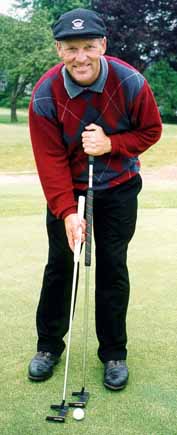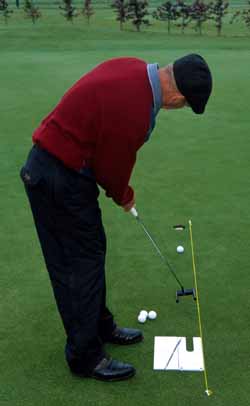
Steve ‘Two putters’ Stull.
|
When it comes to playing golf Steve Stull is unique – he’s the only professional golfer who carries two putters.
"As far as I know I don’t know anyone who does it but to me it makes sense," says the 52-year-old from Washington who has already won on the European Seniors Tour and last week competed in the US PGA Seniors championship, won by John Jacobs.
He carries a standard 35-inch Leading Edge putter with a heavy branding iron-style head and an almost identical make with a 42-inch shaft.
So why the need to carry two putters?
"I’ve found the combination of two putters is ideal. Putting is 50-60 per-cent of the game in terms of scoring. Most players carry 13 clubs for half the game, whereas I carry 12 clubs for half the game and two putters for the other half, " Steve told me while competing in the Wallonia Seniors Open in Belgium, where he led after 36 holes.
He calls his broomhandle his ‘Pressure putter’.
"With my shorter putter I have a tendency to open up the blade and push my putts out to the right and if the putt is breaking left to right that’s not good. It’s immediately below the line and will never come back.
"But if I’ve got a right-to-left breaking putt my tendency to push the putt up the hill means it might just break into the hole on the pro (top) side. With my long putter I tend to pull my putts a fraction but mostly keep them straight.
He says that when he gets under pressure in a tournament sometimes those little putts become difficult but with his longer putter he doesn’t get nervy at all.
"I can stay calm and know I can make the putt. It just gives me a bit of confidence.
But doesn’t it get confusing?
"Not at all," says Stull, "I’ve found the combination of two putters is ideal. To make way for my second putter I leave out either my 7-wood or one of the three wedges I carry.
















